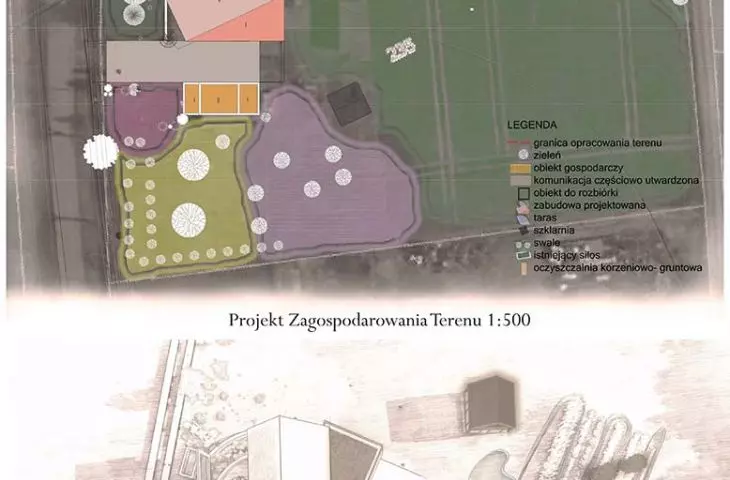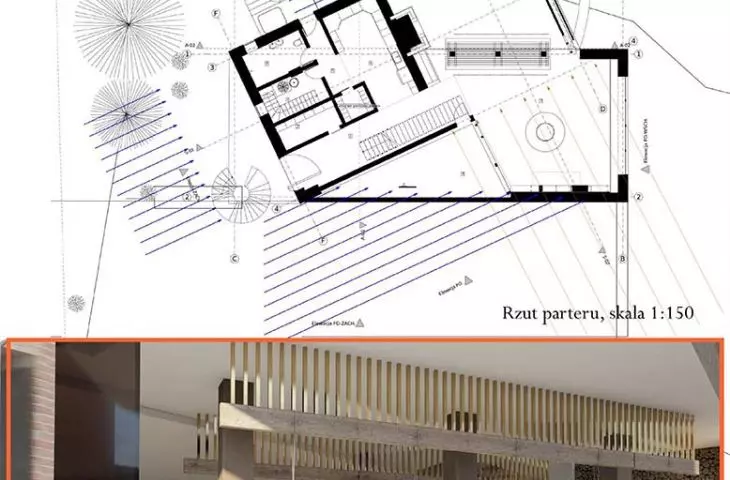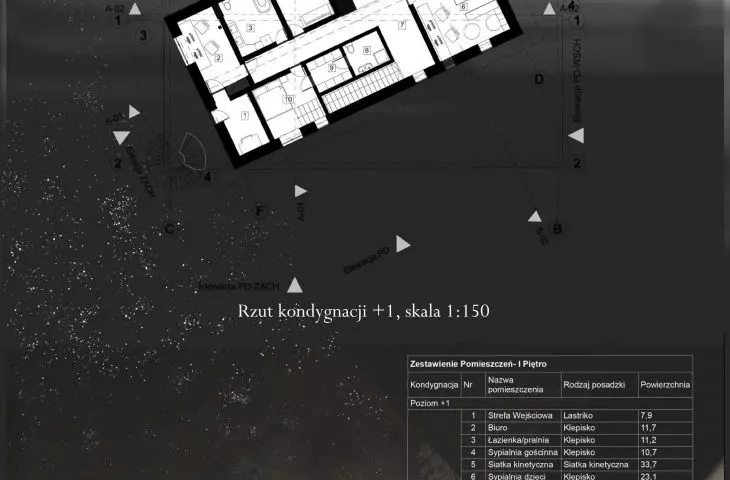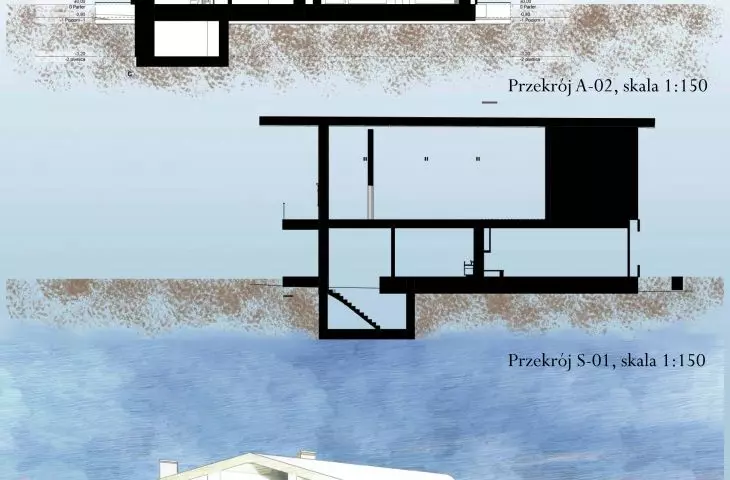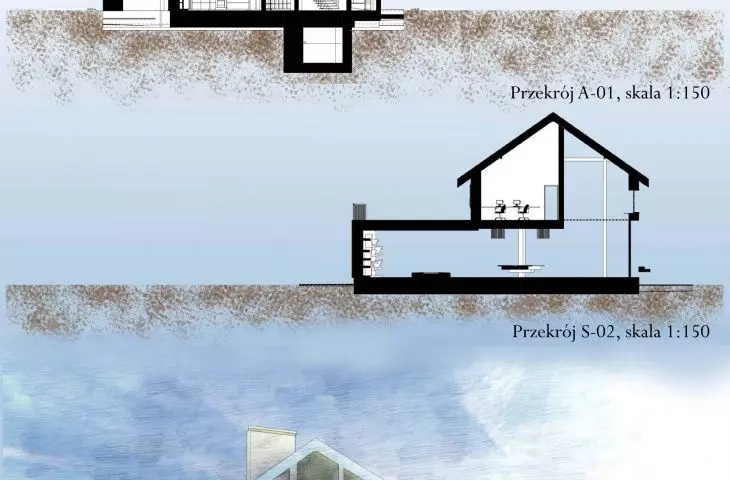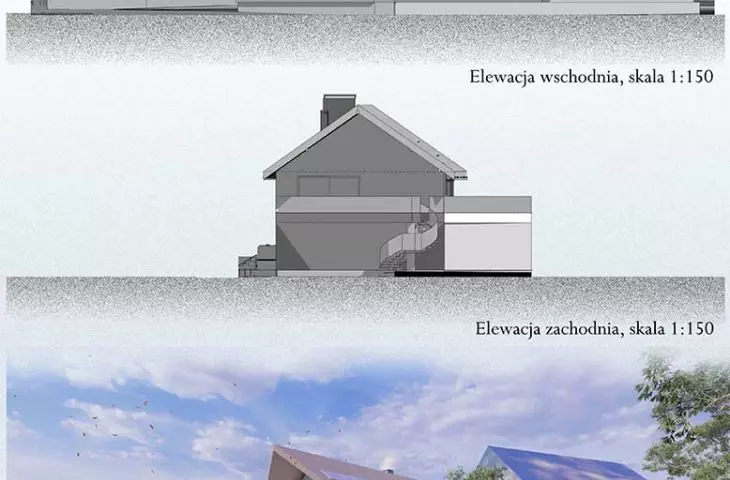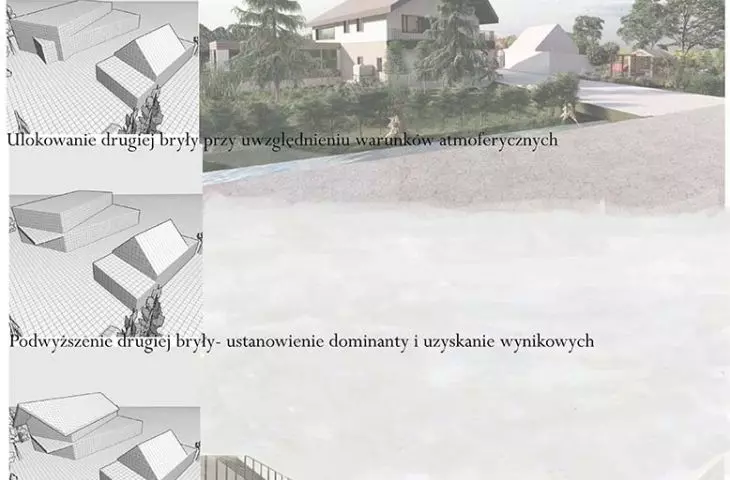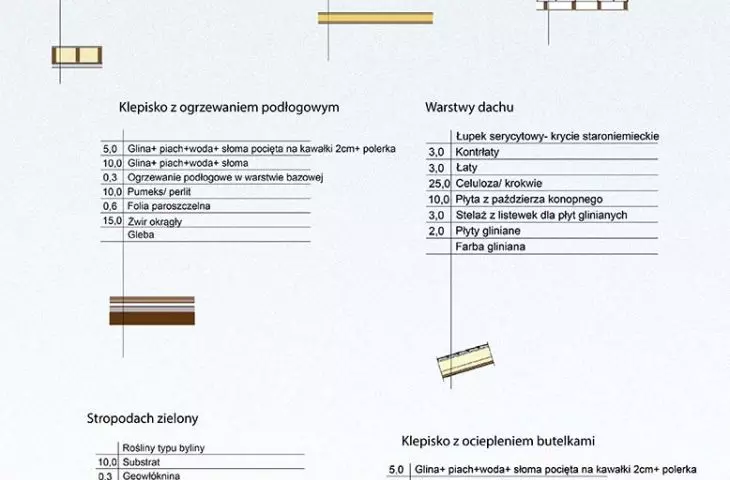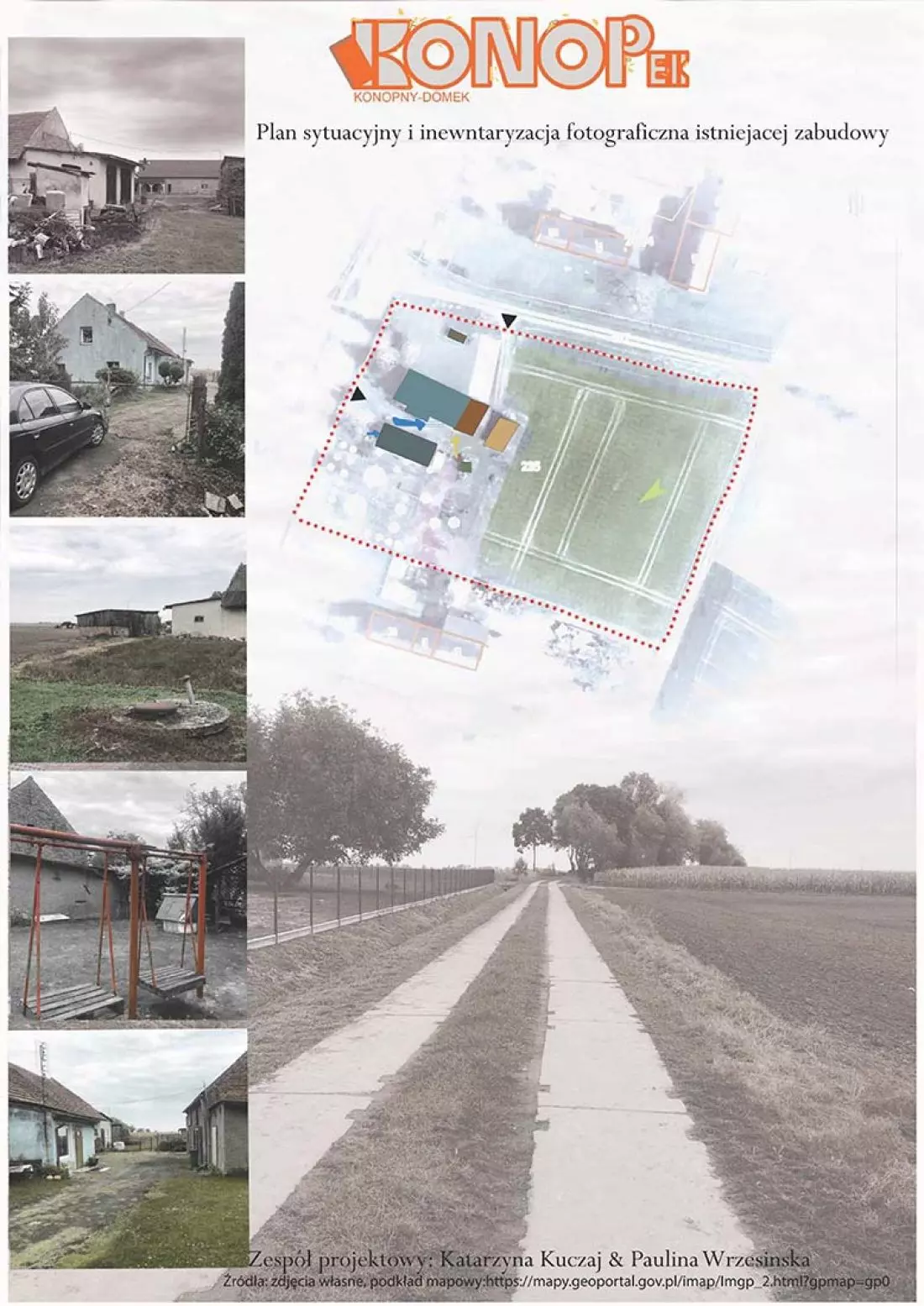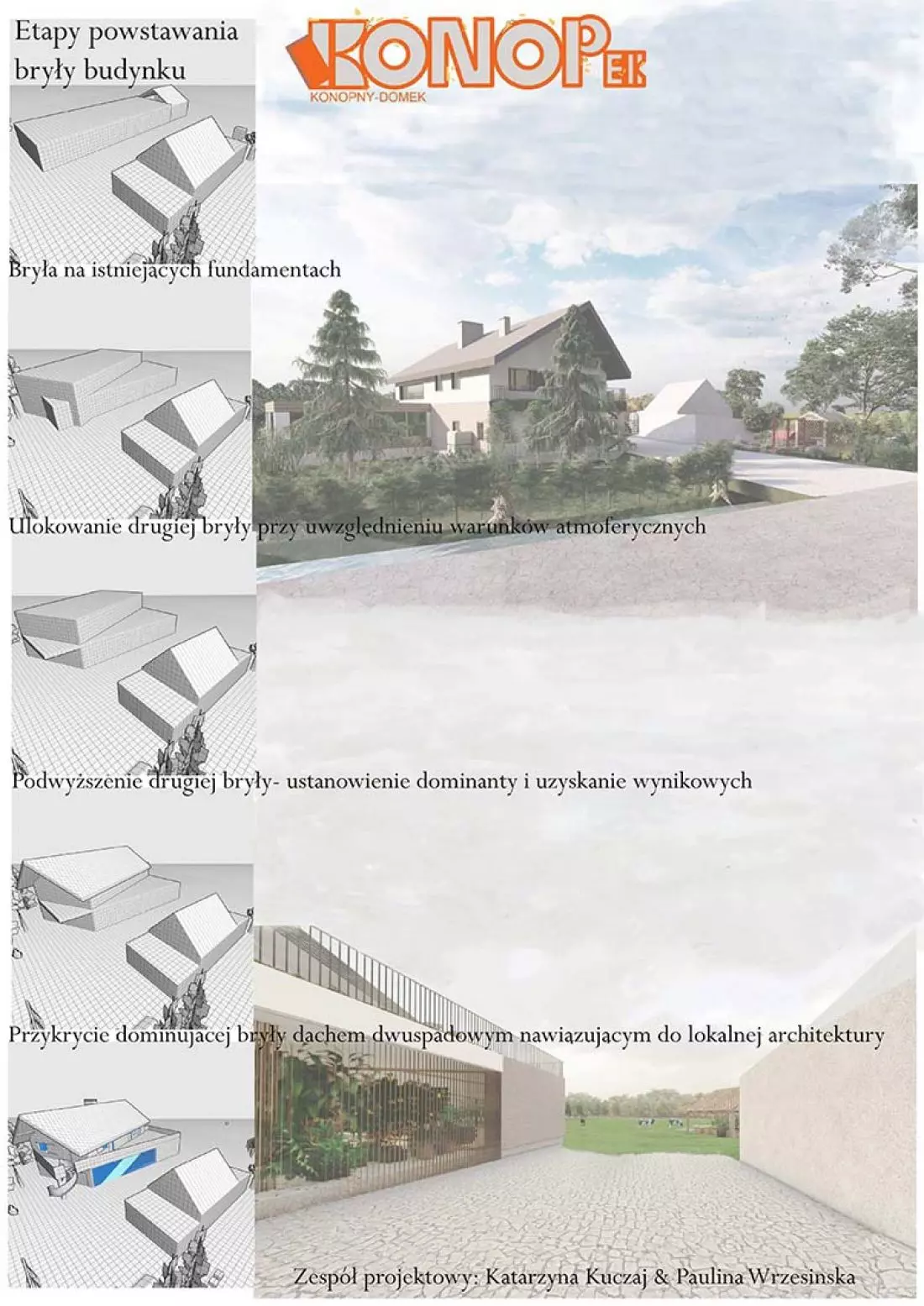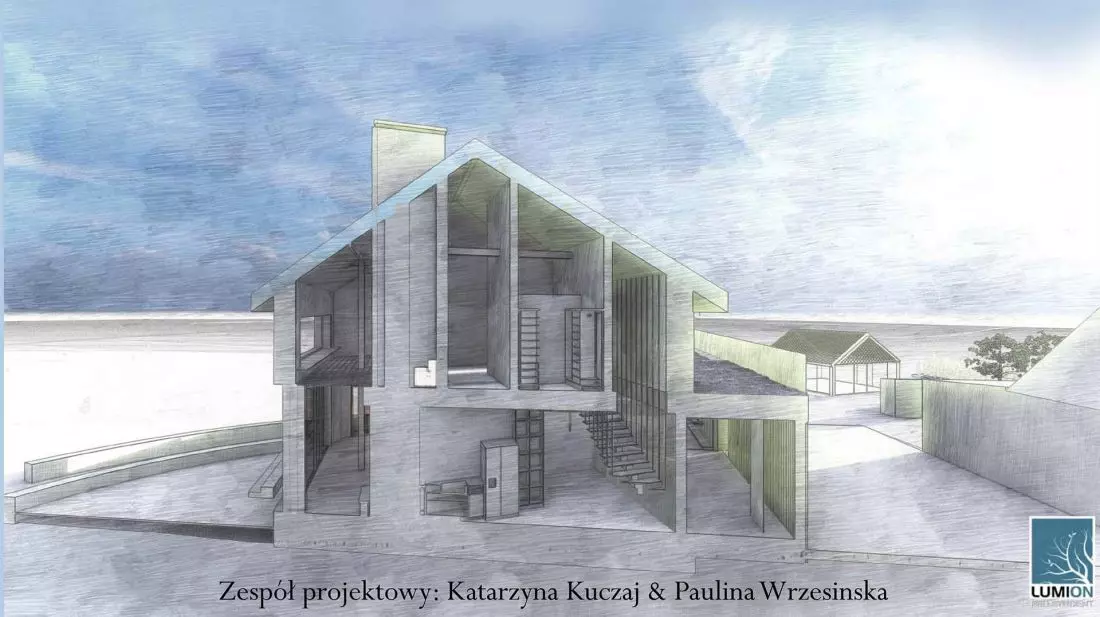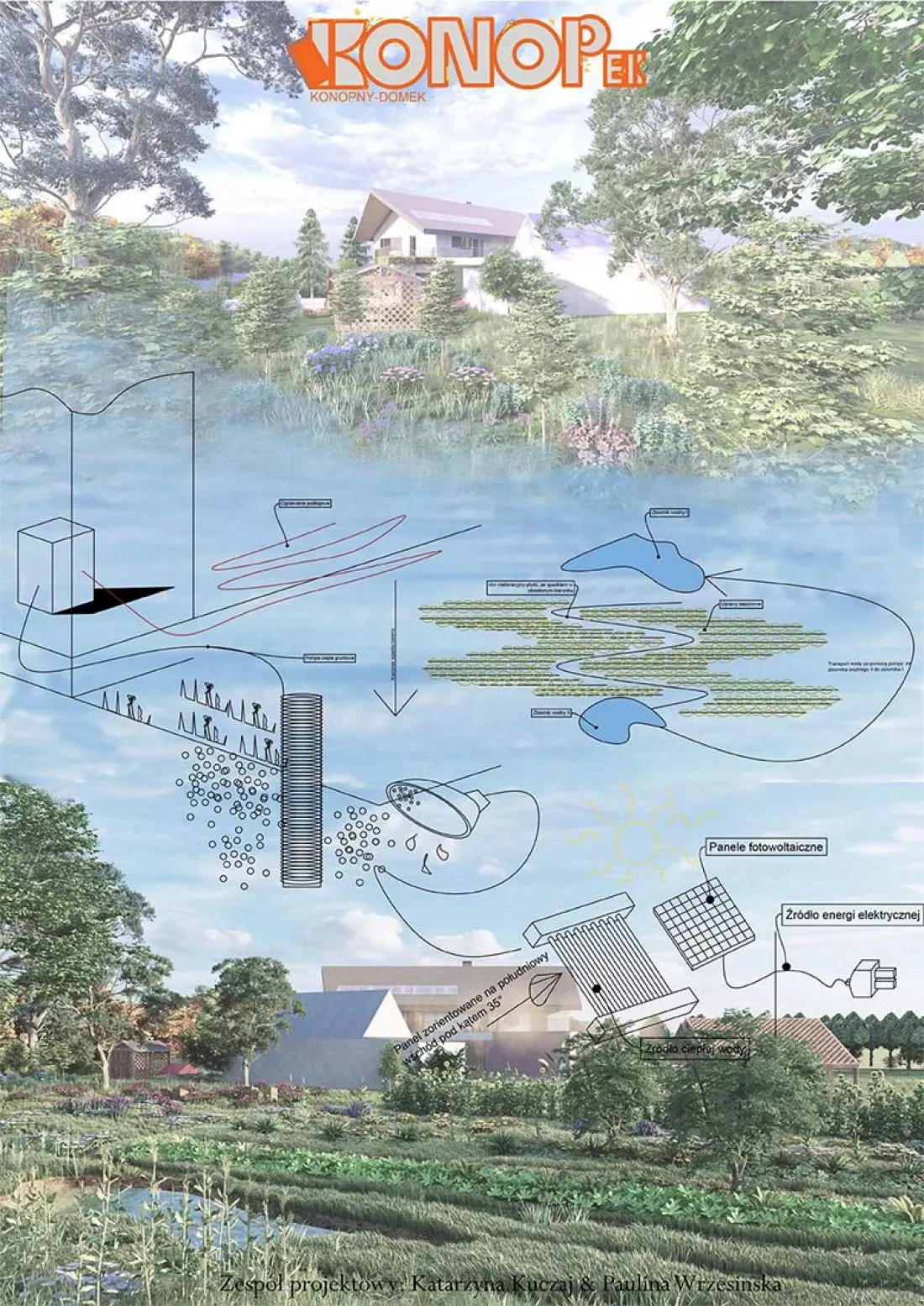Work submitted to the Halina Skibniewskaya student competition - HEALTHY HOUSE
The design of a house for a family of four in Bukow refers in architecture to typical post-German buildings. The authors focus on the greatest possible use of existing facilities on the plot, self-sufficiency and the use of wind, rain, sun and terrain.
The KONOPek project by Paulina Wrzesinska and Katarzyna Kuczaj was carried out as part of their studies at the Faculty of Architecture, Wrocław University of Technology.
situation
We are designing on an existing plot of about 1 hectare located in the small village of Beechwood. The plot is bounded on three sides by communications: a communal road, a "concrete road" (access to farmland) and an access road parallel to the communal road. We are based on a clay ground. We take into account the slope of the land in the direction of the main communication (at which there is a drainage ditch) and the only neighbor (on the south side). On the plot there are currently homestead buildings including: a single-family house combined with a wooden barn and an outbuilding covered with a gabled roof. The complex of buildings is situated on stone foundations. A garage (without a structural part) was added to the structure. Parallel to this development is located an outbuilding.
We design for a family of 4 (i.e. 2 adults + two children). Including space for guests. We refer to the theme of "home fire" and create a meeting place.
floor plan
© Paulina Wrzesinska, Katarzyna Kuczaj
design assumptions:
- Using as much of the existing facilities as possible and adhering to the ideas of earthship, 4R(Refuse, Reduce, Reuse, Recycle) and permaculture principles,
- Creating a building block that makes maximum use of: wind, rain, sun and terrain,
- Creating a space conducive to a family atmosphere, while ensuring privacy,
- Providing a healthy workplace (separation of functions),
- Self-sufficiency,
- Relating the architecture to typical post-German buildings in the village,
- Reversal of animal functions, e.g. pest to helper,
- Use of local materials.
partition made of glass bottles
© Paulina Wrzesińska, Katarzyna Kuczaj
building:
-
Lump of the building in relation to the current state:
We do not eliminate the existing outbuilding. It will retain its current function, and will shield the building from the wind and intense sun. The designed house will replace the northern development.
stages of formation of the body of the building
© Paulina Wrzesinska, Katarzyna Kuczaj
Designed part:
The house consists of two blocks with a rectangular base.
- We located the base rectangle on the existing stone foundations and discarded the section extending beyond the outline of the second solid, leaving only its upper base. This module is one story high. In the part not covered by the dominant, we designed a green terrace (accessible from rooms on the first floor). We also added a staircase that allows access to the office from outside.
The house consists of two blocks with a rectangular base
© Paulina Wrzesinska, Katarzyna Kuczaj
- The second, higher block is the dominant one. With its form it refers to the post-German buildings. It is rotated relative to the base in such a way as to facilitate its ventilation, i.e. perpendicular to the prevailing wind direction in this location. This procedure also allows optically - for an observer from the road - to hide the unusual composition. In turn, an invited person from the courtyard level can enjoy the discovery of the hidden fragment.
a solid that takes maximum advantage of: wind, rain, sun and landforms
© Paulina Wrzesinskaya, Katarzyna Kuczaj
The lump is locally basement for stockpiling, and a place for storing waste from compost toilets has been designated in it. In this part, 3 bathrooms (including one with a laundry room), 3 bedrooms, a dressing room, an office area, a technical room, a kitchen, and a dining room have been designated. The element extending beyond the outline of the lower block is single-story (high ceiling), which provides a favorable perception of the space and the possibility of using a kinetic grid that is a place for younger tenants to play and learn. In addition, the lower section has the possibility of completely opening up to the garden so that we get the effect of permeating the exterior with the interior. This is made possible by the construction of two walls moving on two separated tracks. The first is an interior track, which is the path for Trombe's folding "accordion" wall. The second part is bifurcated and its key moments are supported on the outer structure, which also forms a terrace. In this way we can set the partition adjusting it to weather conditions. In this part we located the main installations.
construction of two walls moving on two separated tracks
© Paulina Wrzesinskaya, Katarzyna Kuczaj
We want to meet the needs that accompany living in the countryside, as well as create a place that responds to the pandemic problem.
Paulina Wrzesinskaya, Katarzyna Kuczaj
Illustrations: © Authors








